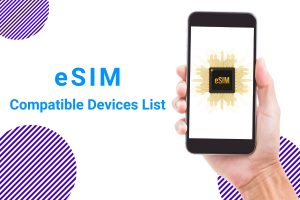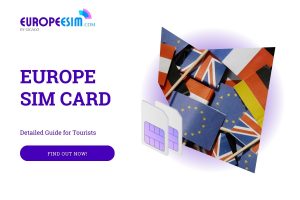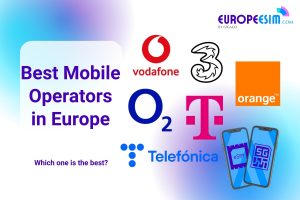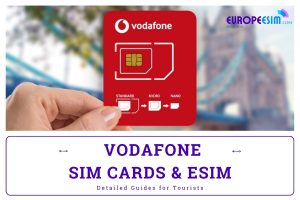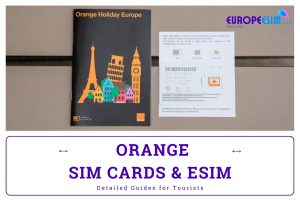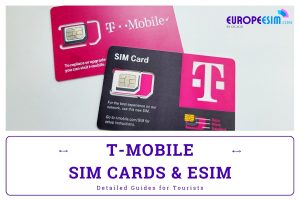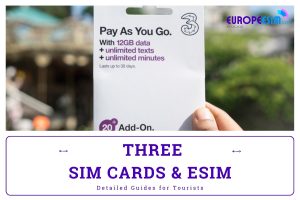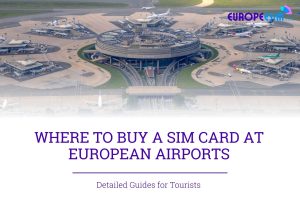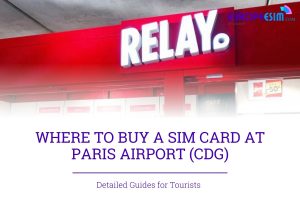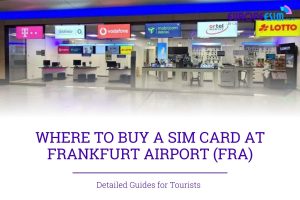Telefonica is a major European telecom company based in Spain with operations across the continent. This guide covers using Telefonica SIM cards and eSIM for connectivity while traveling in Europe. It details coverage, speeds, costs and the top options for travelers. Step-by-step instructions show how to set up a Telefonica mobile plan to stay connected during your trip.
Table of Contents
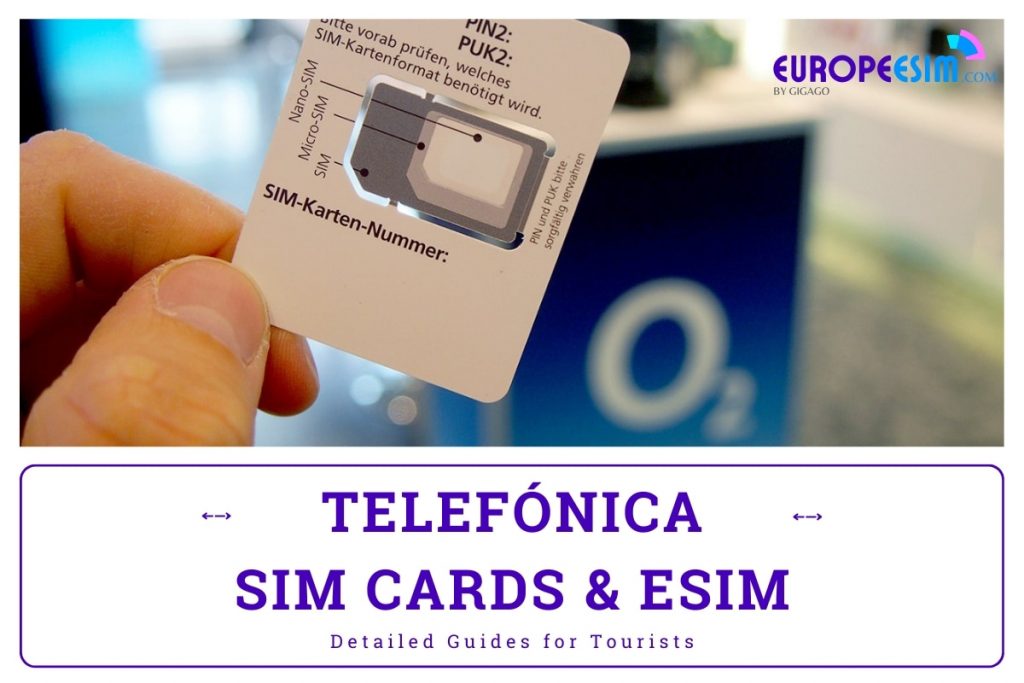
I. Quick Facts About Telefonica in Europe
Telefonica is the incumbent telecom operator in Spain and has extensive operations throughout Europe. Some key facts:
- Telefonica serves over 110 million mobile customers across Europe.
- The company has mobile networks in Spain, Germany, the UK, and several other European countries.
- Telefonica brands vary by country – Movistar in Spain, O2 in the UK & Germany, and Amena, Vivo in some markets.
- It has good population coverage and speeds across its European footprint.
- Telefonica uses standard GSM technology for 2G & 3G networks, rolling out 4G/LTE in most countries.
- It provides prepaid SIM cards and data packages aimed at tourists in many countries.
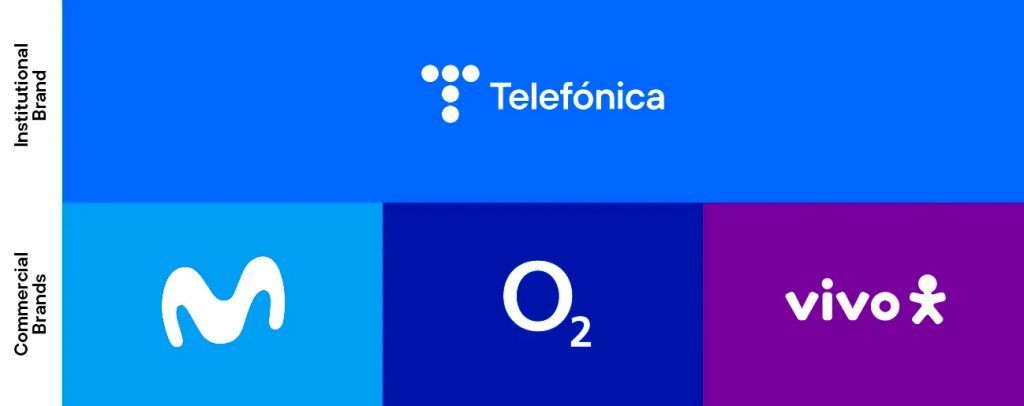
II. Telefonica Coverage and Speed in Europe
As one of Europe’s largest mobile network operators, Telefonica serves customers in several European countries. This section analyzes Telefonica’s network coverage and performance in terms of data speeds available to users.
1.Telefonica Coverage
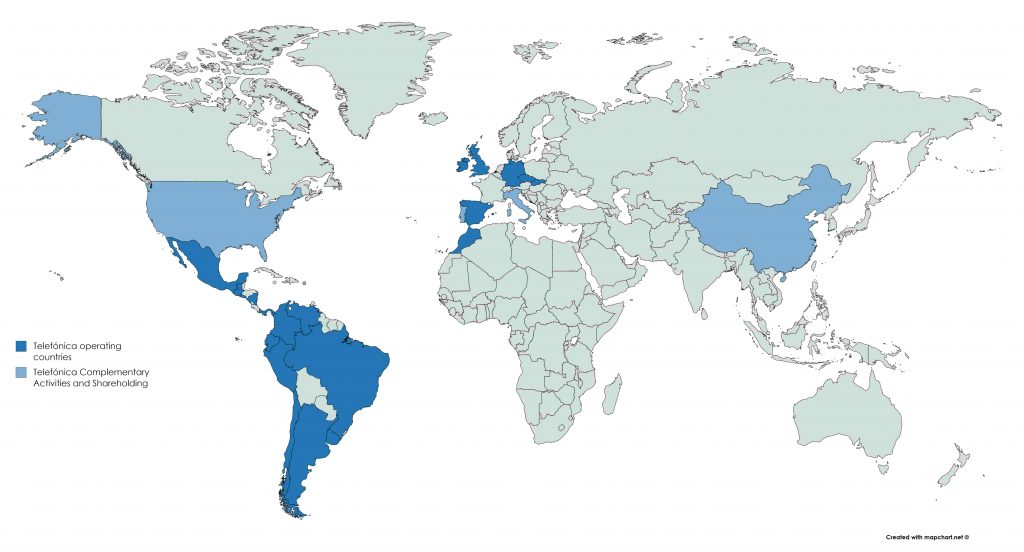
Telefonica has extensive mobile networks spanning its European operations:
Northern Europe:
- Market Share: Weaker presence, mainly through partnerships and minority stakes in operators like O2 UK and Telia Finland.
- Network: Strong 4G and 5G coverage in major cities and urban areas, but limited in rural areas.
- Strong presence: O2 (Germany) and Movistar (UK) offer competitive mobile services and are popular among budget-conscious consumers.
Southern Europe:
- Market Share: Strong presence in Spain and Portugal (leading operator). Limited presence in Italy and Greece.
- Network: Excellent 4G and 5G coverage across urban and rural areas.
- Strong presence: Movistar (Spain), and Wind (Greece) offers a wide range of fixed-line, mobile, and broadband services.
Western Europe:
- Market Share: Strong presence in Spain (leading operator) and Germany (through O2). Relatively smaller presence in the UK (through a joint venture).
- Network: Extensive and robust 4G and 5G coverage across urban and rural areas.
- Strong presence: Movistar (Spain), Meo (Portugal), and Eir (Ireland) are major brands, offering fixed-line, mobile, and broadband services.
Eastern Europe:
- Market Share: Significant presence in the Czech Republic and Slovakia (leading operator). Smaller presence in Hungary and Bulgaria.
- Network: 4G coverage is widespread, but 5G is still in its early stages of deployment.
- Strong presence: O2 Czech Republic and O2 Slovakia offer competitive mobile services, primarily focusing on post-paid customers.
So with a Telefonica SIM, you get widespread coverage for talk, text, and data across most of Europe. Do check specific countries where you travel.
2. Telefonica Speed
Telefónica generally offers competitive speeds across Europe, but performance varies by region and network technology:
- Western Europe: Generally the fastest, with Spain (Movistar) boasting average download speeds exceeding 150 Mbps. Germany (O2 Germany) and the UK (O2 UK/Virgin Media) also offer strong speeds.
- Northern Europe: Speeds vary more, with Germany (O2 Germany) offering good averages while Nordic countries may see lower speeds outside urban areas.
- Eastern Europe: Speeds are generally lower than Western Europe, with the Czech Republic (O2 Czech Republic) offering the best averages.
- Southern Europe: Portugal (Movistar/Meo) offers good speeds in major cities, but rural areas may experience slower connections.
Remember: These are general averages, and actual speeds can vary depending on location, network congestion, and technology used (4G vs. 5G).
III. Telefonica Connectivity Options for Travelers to Europe
Telefonica offers two main connectivity options:
| Option | Description | Pros | Cons |
| Prepaid SIM | Physical SIM card purchased locally. Requires compatible phone. | Affordable, flexible data plans. Local coverage and deals. | Requires phone unlock or dual SIM. Activation and top-up hassle. |
| eSIM | Virtual SIM embedded in phone. Downloaded and activated remotely. | Convenient, no physical card needed. Multiple profiles for different regions. | Limited phone compatibility. Requires internet for activation. |
| Roaming | Use your home network while in Europe. Additional charges apply. | Familiar network and service. Automatic connection. | Expensive data charges. Limited coverage in some areas. |
Recommendation:
- For short trips or budget travelers, a local prepaid SIM card is a good choice.
- For frequent travelers or those with compatible phones, eSIM offers flexibility and convenience.
- Roaming is best for occasional use or emergencies due to high costs.
Additional Notes:
- Telefónica offers prepaid SIMs under various brands like O2, and Movistar depending on the region.
- eSIM availability varies by phone model and region. Check compatibility before traveling.
- Roaming charges can be significantly reduced with add-ons or special Europe travel plans from your home network provider.
- Consider your data usage needs and budget when choosing an option.
IV. Telefonica vs Other European Mobile Operators
Some of Telefonica’s major competitors in Europe include:
- Orange: Known for its strong brand and diverse service offerings across Europe and Africa.
- T-Mobile (Deutsche Telekom): Boasts a large customer base and excels in network quality, particularly in Germany.
- Vodafone: Enjoys global reach and brand recognition, offering a wide range of services.
- Three (company): Stands out for its competitive pricing and focus on data-centric services, targeting younger demographics.
Compared to other providers, the key advantages of Vodafone are:
- Strong focus on fiber and digital services: Telefónica is investing heavily in fiber infrastructure and developing innovative digital services like Movistar, positioning them as a leader in the convergence of telecom and media.
- Latin American presence: Telefónica has a strong and profitable foothold in Latin America, providing a source of revenue diversification and growth potential.
- Commitment to innovation: Telefónica is recognized as a leader in innovation within the European telecom industry, investing in areas like AI, cybersecurity, and IoT.
- Focus on customer experience: Telefónica is committed to improving customer experience through investments in network quality, self-service tools, and personalized offerings.
Please note: This is a simplified overview, and the specific strengths and weaknesses of each operator may vary depending on the country and market segment.
V. Best Telefonica SIM Cards for Tourists & Costs
What are the best SIM cards in the Telefónica network for visitors to Europe? Here are some of the top picks along with indicative pricing.
| Telefonica Network | Tourist Pack/Prepaid Pack | Price (USD) | Data | Validity | Calling & Texting | Additional |
| O2 UK | PAYG Pack | ~$12 | 20GB | 30 days | Unlimited | 25GB Roaming in Europe Zone |
| ~$19 | 50GB | 30 days | Unlimited | 25GB Roaming in Europe Zone + 50 int'l mins to 42 countries | ||
| ~$25 | 120GB | 30 days | Unlimited | 25GB Roaming in Europe Zone + 50 int'l mins to 42 countries | ||
| ~$38 | 200GB | 30 days | Unlimited | 25GB Roaming in Europe Zone + 250 int'l mins to 42 countries | ||
| O2 Germany | Prepaid Plans | ~$11 | 6GB | 4 weeks | Unlimited | |
| ~$16 | 18GB | 4 weeks | Unlimited | |||
| ~$22 | 24GB | 4 weeks | Unlimited | |||
| ~$82 | 999GB | 4 weeks | Unlimited |
So in summary – O2 in the UK and Germany currently have some of the more attractively priced Telefonica connectivity options for visitors depending on country and trip duration. Shop around specific offers.
Note: These are the prices as of January 2024. Check the O2 UK/Germany website for more info.
VI. Does Telefonica Support eSIM in Europe?
Yes, Telefonica is progressively launching eSIM support on its European networks.
- Spain: Movistar in Spain has a Movistar eSIM product where you can activate data + call bundles fully digitally.
- UK & Germany: O2 UK and Germany does not provide eSIM for prepaid users.
While Telefonica is working on expanding eSIM support in Europe, availability differs between countries. Telefonica is moving in the right direction with eSIM, but more work is needed to make support uniform everywhere.
VII. Where to Buy a Telefonica SIM Card and eSIM?
You can easily purchase a Telefonica SIM at their retail stores or online in most countries. Here’s a quick guide:
1. Where to Buy Telefonica SIM Card for European Travel
Physical prepaid SIM cards for visitors are available at:
- Airports – Dedicated Telefonica Travel SIM kiosks or shops in major airports
- Downtown stores – Company-owned stores in city centers catering to tourists
- Online orders – Official website for a specific country with home delivery
For example – movistar.es in Spain, O2.co.uk in Britain, or O2online.de in Germany.
You can complete activation online or in-store depending on the market. SIM card costs around €10-20 with prepaid data/text/voice credit on top.
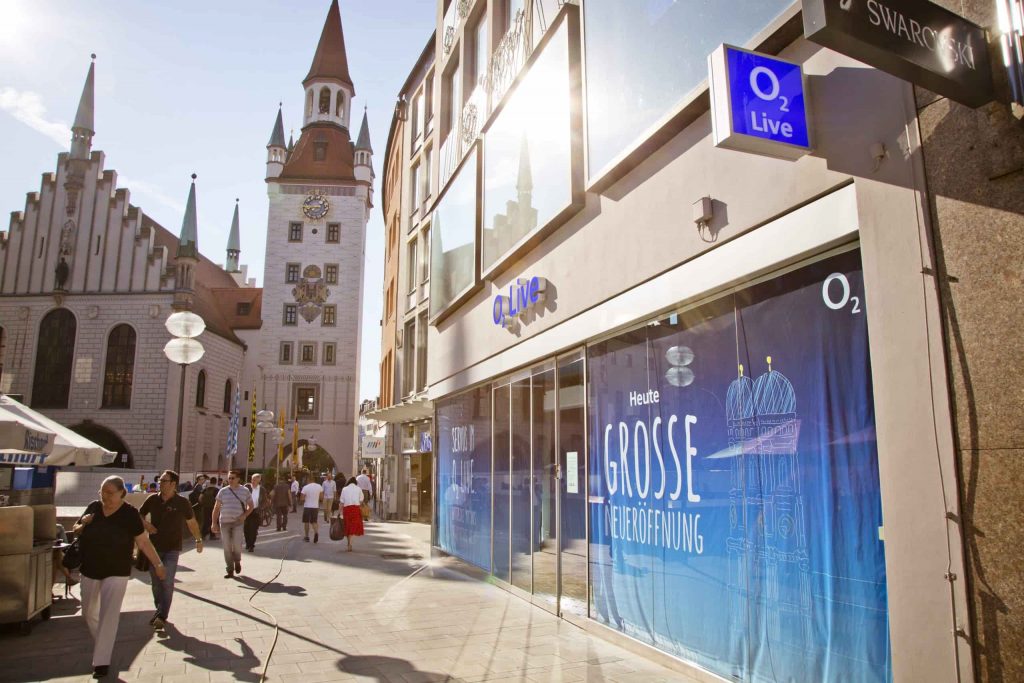
2. Where to Buy Telefonica eSIM?
As mentioned earlier, dedicated tourist eSIM data packages are still limited on Telefonica. Currently, you’d need to sign up for a monthly mobile plan in person at carrier stores to use eSIM which takes more paperwork for visitors.
So physical SIM cards or other eSIM providers are still easier for EU tourists. But gradually expect more short-term prepaid eSIM packs on Telefonica networks across Europe for travel.
VIII. How to Install & Activate Telefonica SIM Cards/eSIM
Activating your Telefonica mobile connectivity is straightforward. Here are step-by-step instructions:
1. How to Install and Activate a Telefonica SIM Card
Follow these steps to start using a Telefonica SIM card in Europe:
- Unlock phone – Confirm your device is unlocked for international SIMs
- Insert SIM – Turn the phone off, open the SIM slot, and gently slide in Telefonica SIM
- Power on and Set up – Follow activation prompts to establish a data connection
- Manage via carrier app – Install an app like Mi Movistar to manage add-ons, usage, etc
You’ll receive an SMS confirmation when the pack is activated. May need to restart the device to establish network connectivity sometimes.
2. How to Install and Activate Telefonica eSIM
To use Telefonica eSIM during Europe travels:
- Check device compatibility – Requires modern iPhone or Android with eSIM profile support
- Digital sign-up process – Currently limited eSIM tourist packs, so likely monthly plan signup
- Identity verification – Share travel IDs and local address proof depending on the country
- Activate eSIM – Scan QR codes or installation links. Add data/voice allowance to plan
- Ongoing account management via apps and online account tools
Still a developing area, but gradually expect better short-term eSIM data packages from Telefonica for visitor requirements.
That covers the key things you need to know about using Telefonica SIM cards or eSIM connectivity for Europe travel!
IX. Telefonica Call & SMS Rates in Europe
Here’s an overview of Telefonica prepaid call and text rates when traveling in the EU:
- Domestic Calls & SMS
- Spain Movistar: Unlimited national calls and texts
- Germany O2: 300 free minutes, €0.09/min after. Unlimited domestic SMS
- UK O2: 75-100 included minutes usually. £0.10-0.55/min post allowance
- International Calls
- €0.05-0.39/min to EU landlines
- €0.15-0.69/min for EU mobiles
Rates can vary a bit by specific country, but very reasonable to call your home country or other EU numbers if required during your trip while on Telefonica networks.
X. How to Top-up your Telefonica SIM Card
When Telefonica data or calling credit runs low while traveling, you can easily top-up your prepaid SIM.
- Online Top-up – The fastest way is to top-up online via Telefonica’s country-specific website or mobile app. Use your registered payment method to add more data packs or voice bundles via a few clicks either on the web or mobile app.
- Retail Outlet & Vouchers – Alternatively visit any branded Telefonica store in Europe or retail outlet selling top-up vouchers for Movistar, O2, etc. Physically purchase denomination vouchers like €10, and €20 top-up scratch cards. Redeem its PIN online on account or dial the USSD activation code – which adds credit to your SIM.
Keep tabs on data and call usage via the Telefonica app to anticipate topping up proactively before balances hit zero during travel and avoid mid-trip hassles.
Autos top-up feature is also available on some plans so recharges automatically if the balance is below a preset threshold.
XI. Alternatives to Telefonica in Europe
Here are some alternatives to Telefonica for mobile service in Europe:
- Vodafone – One of the largest networks in Europe with coverage in many countries. May be a good option if you frequently travel between major European countries.
- Orange – A major network operator in France and some other European countries. Better coverage than some budget options.
- Three – Provides mobile service in several European markets including the UK, Ireland, Italy, and Austria. Known for competitive plans and prices.
- T-Mobile/Deutsche Telekom – The largest mobile network operator in Europe by revenue. It has decent coverage throughout the EU.
- Europe eSIM – Virtual SIM provider with data-only eSIM plans tailored for travel to specific countries/regions.
Comparing rates and coverage of the above options based on your destination countries in Europe. An MVNO SIM or data eSIM could be more cost-effective than using your existing domestic provider.
Stay connected in Europe without roaming fees. Get affordable eSIM data packages for your trip now from europe-esim.com. Install in minutes and enjoy local 4G speeds wherever you go. Buy your Europe eSIM plan today!
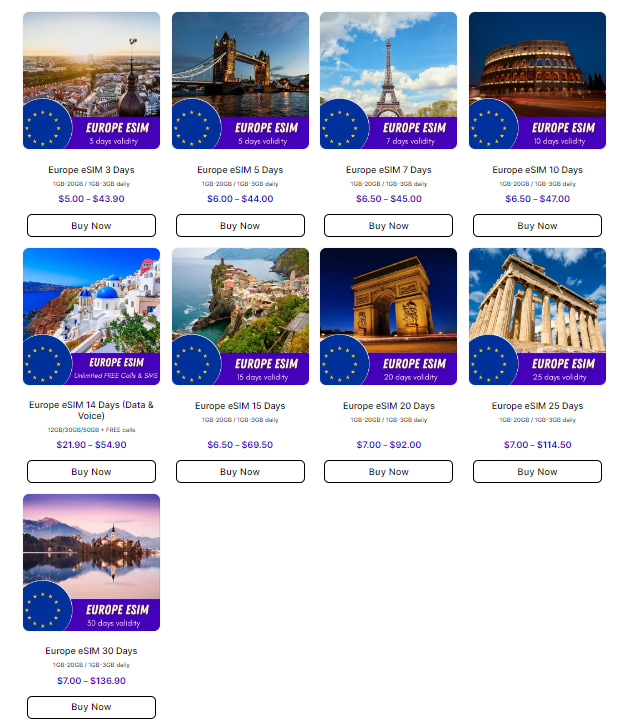
XII. FAQs
Does my phone need to be unlocked to use Telefonica SIM?
Yes, you need to ensure the handset is network unlocked before inserting any international SIM like Telefonica for European travel. Confirm with the carrier if unsure.
How much data do I need for Europe trip?
For light usage like maps and messaging, start with 5-10 GB for a short 5-7 day trip. Buy add-on packs if running low. For regular social media usage, streaming, or better value – choose 15-30GB monthly packs.
How long does Telefonica SIM card activation take?
Telefonica SIM activation takes only a few minutes in most cases. Automated process after you insert SIM and hit the activation option.
Where do I find Telefonica SIM APN settings?
Telefonica SIMs automatically configure APN when activated. Defaults work on most devices. But if data issues, manually enter APN settings available on the package or online.
How do I track Telefonica data usage?
Register your Telefonica SIM card on the company website/mobile app to easily check data and call usage in real-time. Helps better manage balances.
XIII. Final Words
This guide provides answers on using Telefonica SIM cards or eSIM when traveling in Europe. They deliver reliable connectivity through reliable networks like Movistar in Spain and O2 in the UK, with good deals on data, widespread coverage, and easy top-ups. Compare deals but Telefonica networks are a solid choice for reliable connectivity while exploring Europe. Have a great trip!
